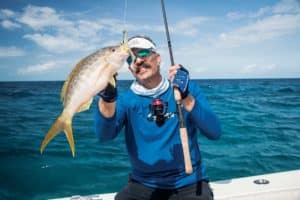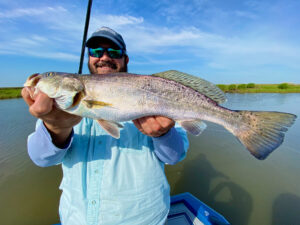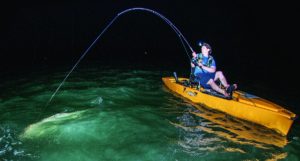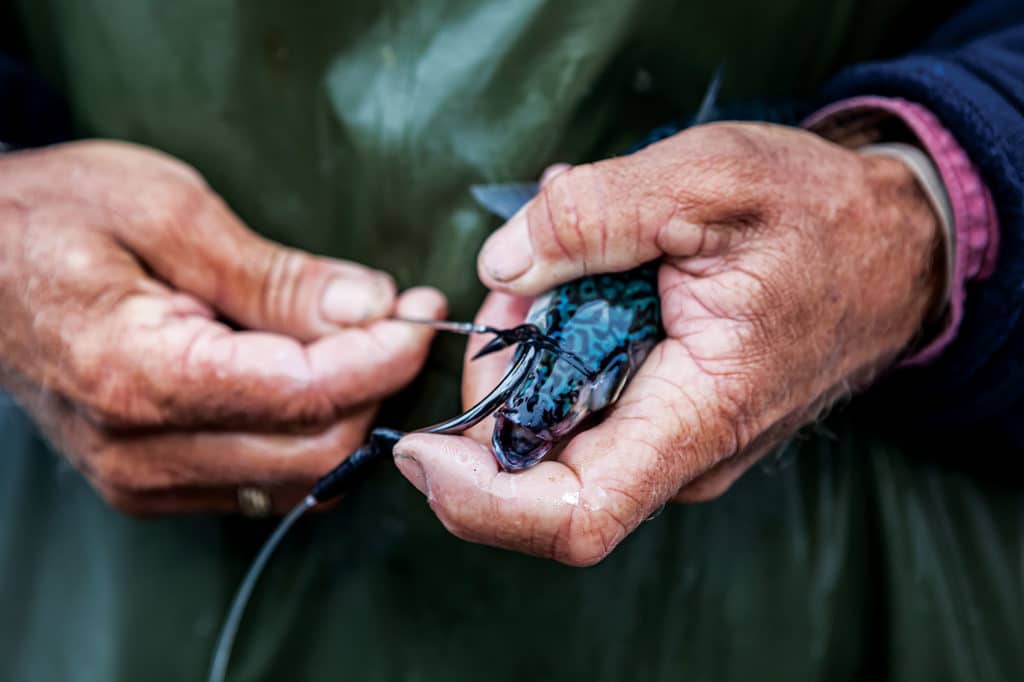
The most successful offshore anglers never leave the dock without pitch baits. Dead or alive, those baits can turn a fair day of fishing into an unforgettable one.
“Every single day I go in the ocean, if there’s a snowball’s chance in hell of catching a marlin, I’ve got a pitch bait on. All day, every day,” says Capt. Matt Carter, who once ran charters out of North Carolina’s Oregon Inlet and now skippers private boats.
Carter, who fishes from Montauk, New York, to Mexico, always keeps pitch baits rigged and ready because many fish show up unexpectedly. The baits also tempt fish that appear in a trolling spread or behind a daisy chain but show no interest in eating.
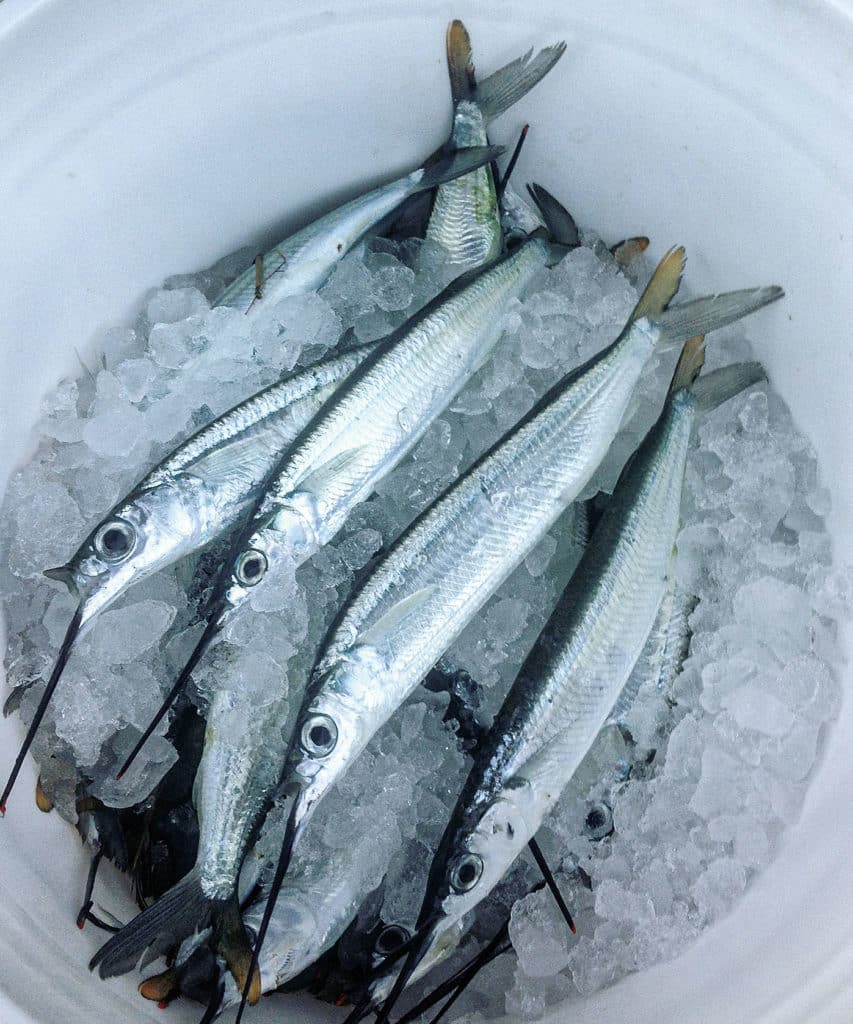
“If a gaffer dolphin comes in, you need your pitch bait to be able to catch it,” he explains. “If I’m fishing a 9/0 or 10/0 tuna bait, I promise you that if he comes in on a teaser, he’ll hit that pitch bait. And how many times are people tuna fishing and a small blue marlin or white marlin comes in and is all over the spreader bar, and everyone’s looking at it?
“They have the mindset, ‘We don’t need a pitch bait; we’re not marlin fishing.’ What do you do when that gaffer dolphin comes in? Or that sailfish? You know how hard it is to hook a sailfish on a big lure? I always have pitch baits ready to go if a sailfish, whitey or a blue comes in. I want to make the most of that opportunity.”
Widespread Appeal
Pitch baits prove popular from coast to coast. California tuna fishermen, such as Capt. Ty Ponder, a private boat captain and Rapala pro staffer from San Diego, use live Pacific sardines. Spanish sardines rank as the No. 1 pitch bait for Florida captains such as Casey Hunt of Key West’s CN-it Adventures. A threadfin herring ranks as his second choice. Carter’s go-to pitch bait is a dead ballyhoo, which matches what he’s trolling.
“All trolling guys, whether they’re fishing for blue marlin, white marlin or sailfish on the East Coast pitch dead baits, and all live-bait guys pitch live baits,” Hunt says. “Most boats are set up to always troll or always live-bait. But if you’re trolling and you have some live bait, it’s a great weapon.”
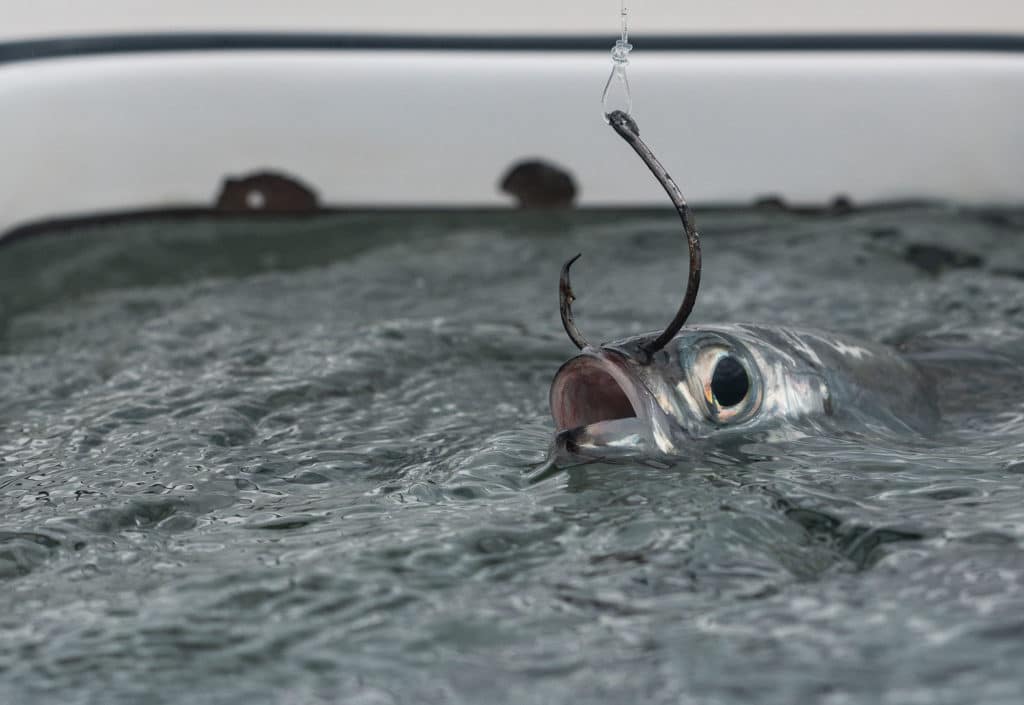
Whether you pitch live or dead baits, always have a bait ready, and immediately drop it into the water when a fish shows, especially when you already have one fish hooked, captains say.
“If you’re fighting a sailfish, cast [a sardine] toward it, and a lot of times you’ll hook another sailfish right away,” Hunt says, noting that the technique works with other species, most notably dolphin, but also wahoo, tuna and marlin. “Even before you release it, have a guy cast a bait toward that fish.”
When he trolls at 15 knots for wahoo, for instance, he’ll slow the boat once he hooks a fish and ask an angler to cast a live goggle-eye with a wire leader, in case there’s another wahoo around. With dolphin, he waits to pitch a livey until the fish obviously snubs the trolled baits.
If he finds a school of dolphin, Hunt starts casting lures or jigs. When the fish lose interest, he switches to chunks of ballyhoo or bonito. When they stop biting the chunks, he deploys liveys. And before leaving a dolphin school, he drops a live goggle-eye deep, well below the school, in case a larger fish still lurks.
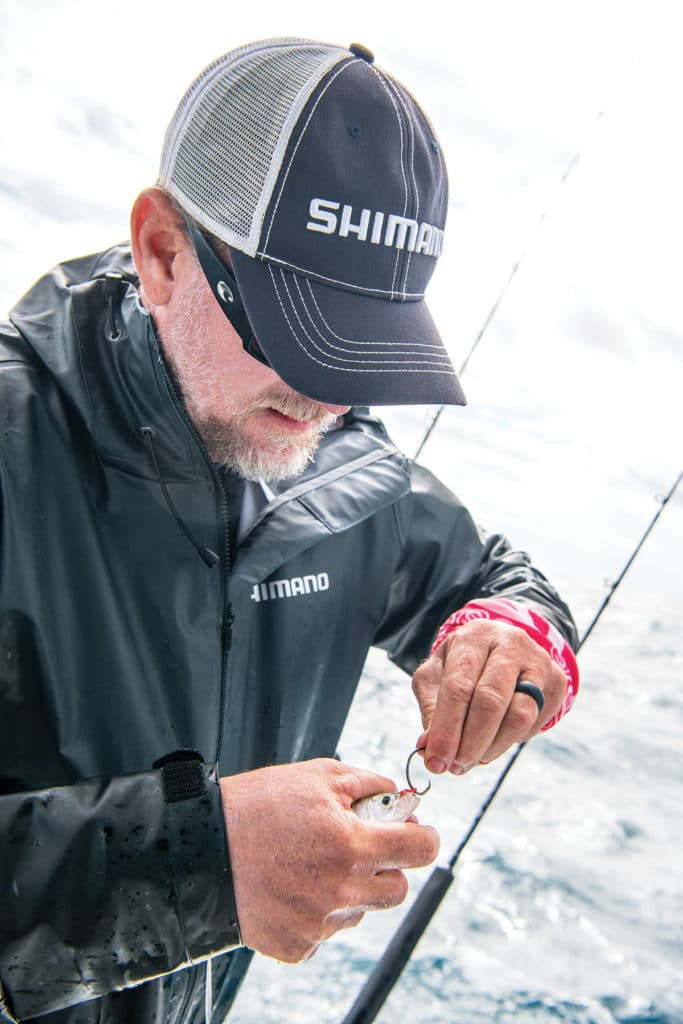
When targeting tuna, Hunt will watch for the first jump, “then just throw everything you’ve got in your spread, because the more baits you have in the water, the better,” he says. “We do a lot of that, or we cast popping plugs. That kind of gets blackfin and yellowfin tunas fired up, then we cast baits.”
Hunt says he also has tossed pitch baits to white marlin out of Harbor Island in the Bahamas. “We’re pulling baits, hook a white, and as he’s getting close to the boat, we flip out live goggle-eyes and hook another.”
Pitching Sailfish
Florida captains use pitch baits most often for sailfish because the sails usually travel in pods.
Hunt also keeps at least one live pitch bait handy, hooked to a spinning outfit, for those times when sails pop up in a kite spread or when he spots a free-jumper.
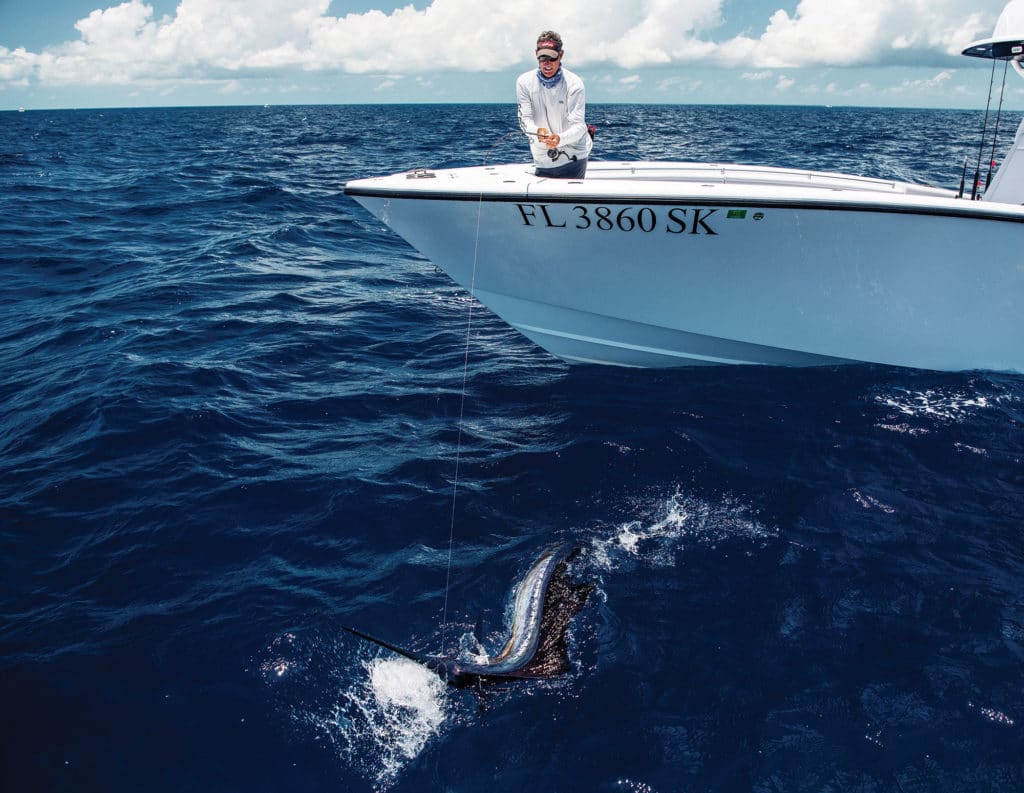
“If you see one free-jumping, basically lock up all your reels, speed up the boat, and pull all your baits over to where you saw him,” he says. “If I know there are a lot of free-jumpers around, I like bridling kite baits through the nose. If we have to pick them up, it’s easier if they’re hooked in the nose instead of the back.
“If you’re running along and see a sailfish jumping, try to get ahead of him and cast three or four baits at him, even if he goes down. He might come back up and bring more fish with him.”
Marlin Readiness
When he’s trolling for marlin, Carter never knows what might show up in his spread, so he always keeps two sizes of pitch baits on his boat. If the big blue appears but doesn’t eat, he pitches a horse ballyhoo on a 10/0 to 12/0 circle hook behind a Mold Craft chugger lure, a tactic that has caught 600-pound marlin. His smaller pitch bait for small marlin, sailfish and dolphin is a naked “dink” ballyhoo on a 7/0 circle hook.
“Every time I hook a fish, pitch baits go in the water,” he adds. “Everybody’s prospecting. We make 20 or 30 pitches every single day. Don’t be scared to throw it. I think a lot of recreational anglers don’t take advantage.”
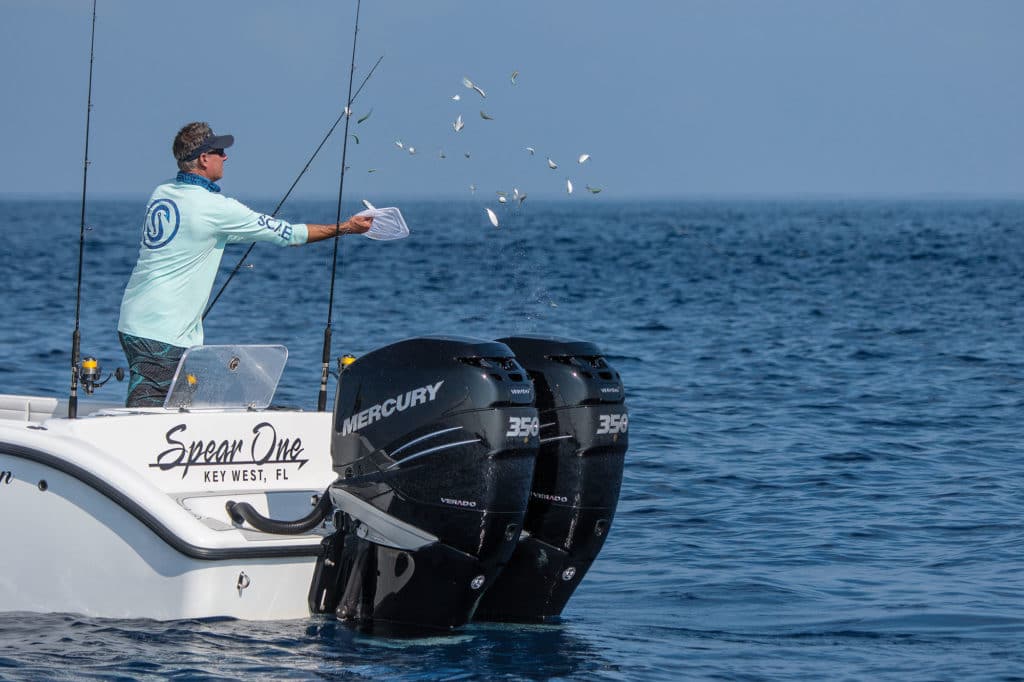
When a blue marlin comes up in Carter’s spread, he slowly pulls the teaser to the boat. As the teaser comes in, his mate puts a pitch bait in the water. One tip for hooking a blue on a pitch bait: Don’t let it get too far behind the boat.
“You never let the pitch bait get past where the squid chain would be,” Carter says. “People have a tendency to drop back and back. I always keep it near the back of the boat, and I make the fish come to me. If he’s inside the short-rigger distance, then you’re way better off. Too far back, you can’t see how to feed it.”
He recalls one MidAtlantic tournament he fished, when he had a white marlin doubleheader on the two flat lines. His mate was hauling in a daisy chain when Carter glanced at the outside teaser and saw a 400- to 500-pound blue marlin.
Says Carter of another trip: “One time in the Dominican Republic, we hooked two white marlin, and as we caught them on the turn, we had the baits going out and hooked a sailfish. “As we were hooking the sailfish, we pitched a bait to a blue marlin. So we literally caught a grand slam in one turn.”
Targeting Tuna
Ponder says West Coast anglers typically target yellowfin tuna and yellowtail with pitch baits—although in the past three years, bluefin tuna to 300 pounds also have made the hit list.
When tuna fishing, he runs 10 to 100 miles offshore, where he focuses on known ridge areas or high spots. There he looks for kelp paddies and what he calls floating structure, which attract bait and gamefish. Temperature breaks of 1 to 3 degrees often draw bait to the cooler side; the gamefish stay along the warmer, clearer side of the break. In Southern California, a typical break might transition from 63 to 65 degrees or 65 to 67.
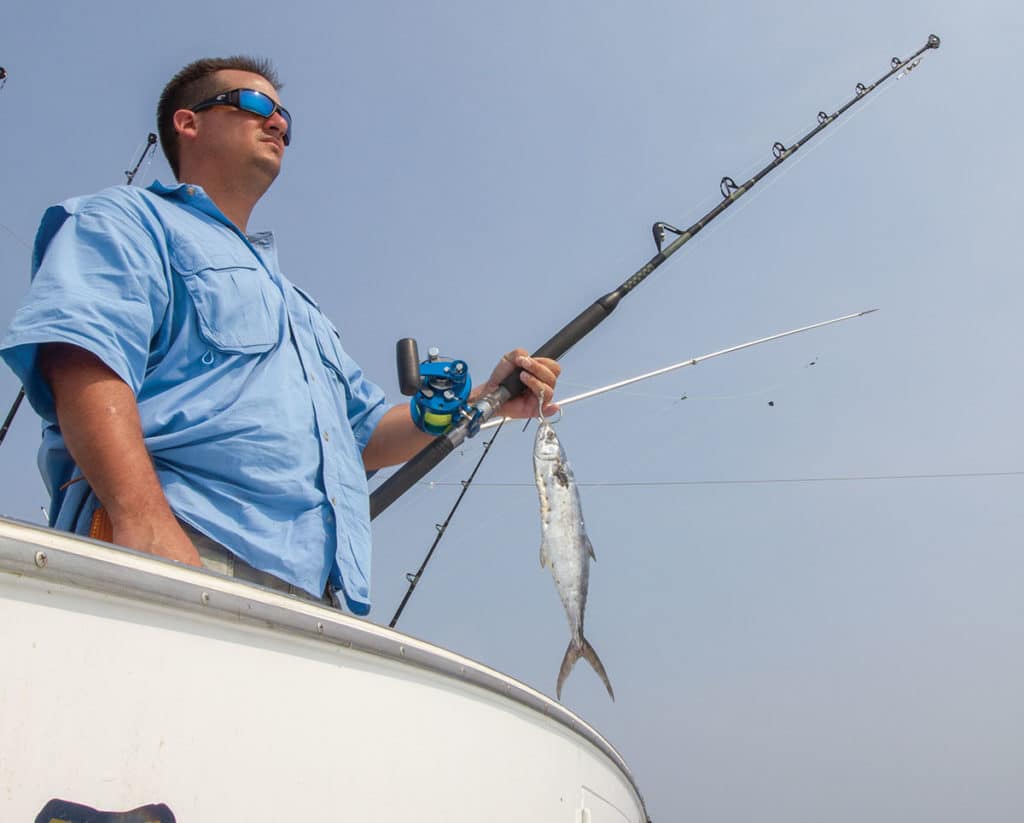
Ponder also looks for dipping or diving birds. During summer, pods of feeding common dolphin can indicate tuna. And he always keeps an eye out for surface-breaking tuna. When he finds promising conditions, he often trolls feathers—real and plastic—as well as deep-diving Rapala X-Rap -swimming plugs.
“As soon as somebody gets a bite, the first thing we’re going to do is start chumming,” says Ponder, who tosses out one or two live sardines at a time to keep the school close.
He prefers to rig a 6- to 10-inch live sardine for pitching, although he also uses anchovies and mackerel. Ponder notes that it’s critical to handle a bait with care, taking it out of the livewell with a bait net so that it looks good, retains all its scales, and remains lively.
“When you pitch it in the water, you want it to run away from the boat immediately. That’s going to be ideal,” he says, adding that an underhand pitch works best. “An overhand cast stuns the sardine when it lands, and it doesn’t run. With an underhand pitch, the sardine is more likely to run away from the boat. If it runs hard, it’s likely to get bit.”
If the bait doesn’t swim away, Ponder doesn’t soak it. “I immediately flick it off [the hook], and I go right back to the well and get another bait. I want a bait that’s fired up and swims away to get that reaction bite.”
Read Next: How to Snell a Hook
Feather the line as the sardine swims away to keep in touch with the bait. “I hate to see guys feeding line, and they get a bunch of slack, and they’re not feeling their bait. They feed out 100 yards, and they don’t even know that their bait is sitting straight under the boat.”
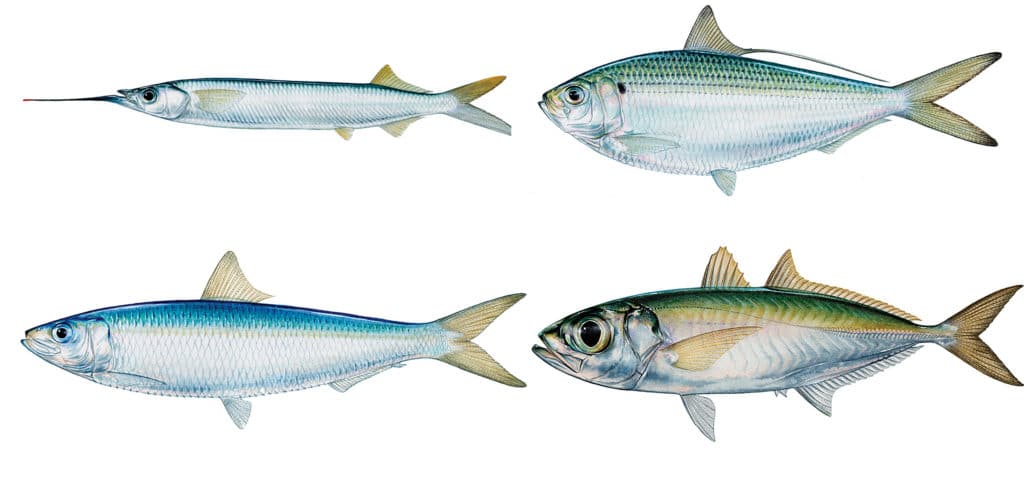
Even when pitching dead baits, keep that connection and you’ll score more hookups. With time, experience and dedication to the details, you’ll perfect that all-important sales pitch.
Sticks and Rigs
Capt. Casey Hunt of Key West, Florida, who kite-fishes with 20-pound Accurate conventional reels, suggests a 7-foot spinning rod and any brand of reel that holds 400 to 500 yards of fishing line for pitch-baiting.
He ties a Bimini twist in his 20-pound Momoi Diamond or Diamond Illusion main line, creating 10 inches of doubled line. With an Albright knot, he attaches a 15-foot leader of 30-pound Momoi Diamond fluorocarbon tied to an Eagle Claw 5/0 or 6/0 circle hook. He hooks or bridles live pitch baits through both lips so that the baits don’t fly off when cast.
While Hunt runs along a color change to set up a drift, each of his anglers stands ready with a baited spinning outfit. The prepared baits swim in either a 5-gallon bucket of water or a livewell. If Hunt sees a free-jumper, he can maneuver in front of the fish to let the anglers cast.
To catch tuna in the 20- to 50-pound class, Capt. Ty Ponder of San Diego uses a 7-foot, 6-inch Okuma PCH Custom extra-heavy, 30- to 60-pound rod with Okuma Cavalla conventional two-speed reels in size 5 or 12.
He typically fishes 65- to 80-pound Sufix braided line with 6 to 100 feet of 30- to 50-pound Sufix Invisiline fluorocarbon leader. He uses shorter leaders to maintain sensitivity to the bite but extends them if fish grow skittish.
Ponder attaches the braid to the fluorocarbon with a John Collins knot, also known as the Royal Polaris knot, which he likes because it’s slimmer and seldom fails. He upgrades his tackle appropriately when bigger bluefin tuna come around.
He uses a San Diego jam knot to attach a VMC circle or J hook, which he matches to the size of the bait. “I personally never set the hook on a tuna, even with a J hook. I just reel the line tight and lift the rod tip.”
Ponder often nose-hooks live sardines when pitching them for tuna and yellowtail. He also hooks sardines in the back, just ahead of the dorsal fin, which makes them “look like a Rapala.” For a third option, he hooks the sardine in front of the anal fin so that the bait swims down and away from the boat.
Private-boat skipper Capt. Matt Carter uses 20- to 30-pound-class custom rods with Shimano Talica 20 or 25 conventional reels. He attaches 30-pound main line with an 80-pound top shot to a ball-bearing swivel crimped to a wind-on leader of 60- to 80-pound fluorocarbon. He snells the leader to a 7/0 circle hook baited with a dead, naked ballyhoo.
Carter keeps the rods handy in the rocket launcher or tower-leg rod holders, and the rigged ballyhoo rest in pitch-bait tubes filled with ice and salt water to keep the baits fresh. “Nothing’s worse than fishing all day and having the fish of a lifetime come up, and you’ve got a bait that’s been drying in the sun,” he says. “They won’t eat it.”
Carter notes that the tubes can be attached to a tower rod holder, a fighting chair or a rocket launcher, so they’re always in the right place when the time comes.
“No matter what you do, you have to get in the habit of having that pitch bait in the same location every time,” Carter says. “You don’t even have to think about it. My mate hears ‘right teaser,’ and he goes straight to that rod every time.”


